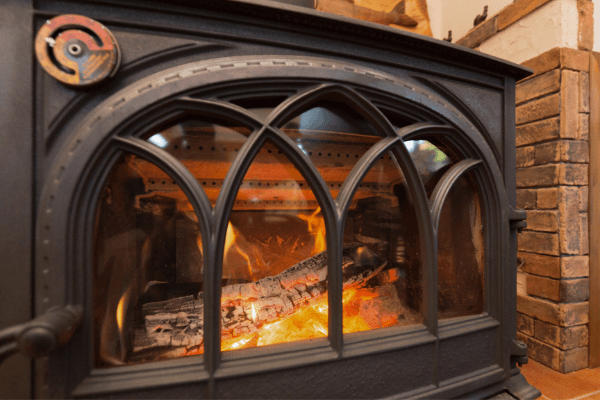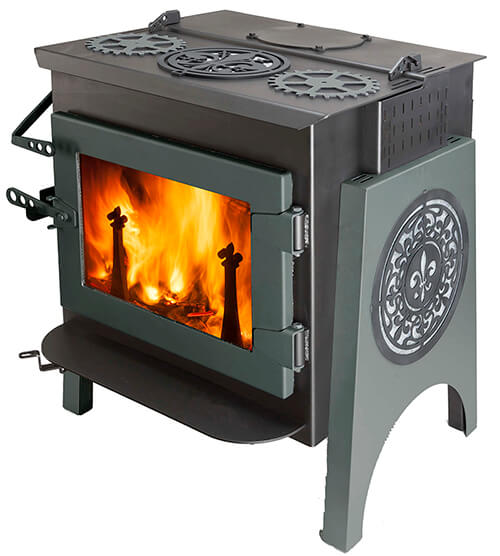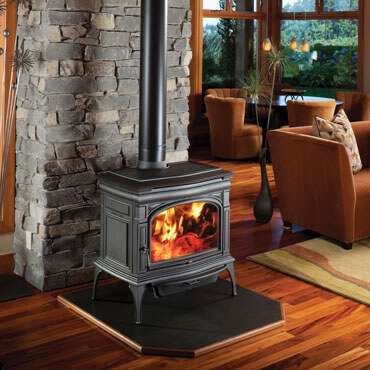- Home
- Wood Stove Guide
- High Efficiency Wood Stoves
High Efficiency Wood Stoves
This post may contain affiliate links so I earn a commission.
High Efficiency wood stoves are designed differently than the wood stoves of past generations.
Increased concerns about clean air and the issues created by particulate matter from wood burning in densely populated areas lead to there being reconsideration about how we burn wood and what standards those appliances should be required to meet.
While older wood stoves could put out as much as 15-30 grams of particulates an hour, more efficient stoves that meet the EPA requirements put out less than 4.5 grams per hour with a further reduction in the guide lines to 1.3 grams per hour according to the EPA.
High efficiency wood stoves push these numbers even lower.
Depending on the testing method used, they put out anywhere from 0.45grams to just over 1 grams of particulate an hour.

While there are different ways to create higher efficiency in stoves, the ones I am going to discuss here have opted to refine reburn technology to further control the burn and extract as much heat as is possible while keeping the function relatively simple and increasingly user friendly.
High Efficiency Wood Stoves
High efficiency wood stoves use a variety of methods to increase heat output efficiency, and reduce your wood consumption.
Some of these methods are older technology updated and refined with improved modeling and materials technology.
Others are add-ons to existing systems like the use of a thermo-electric generator to run fans that recirculate combustion gases to improve the efficiency of the woods combustion, optimizing the burn and greatly reducing particulate matter released in the chimney emissions.
Utilizing wasted energy to improve efficiency is of course the dream of every engineer.
In 2013 a Wood Stove Decathlon was held at The National Mall in Washington DC.
Teams were tasked with building unique and innovative wood stoves that would be efficient, and have low particulate emissions while also being competitively affordable.
 Woodstock Ideal Steel Hybrid Stove
Woodstock Ideal Steel Hybrid StoveWoodstock Wood Stoves of New Hampshire was the eventual winner.
In the aftermath of their win they gave a interview with Popular Mechanics who had been one of the title sponsors of the event.
In this interview and subsequently after, the Ideal Steel Hybrid wood stove was released for sale.
Woodstock has provided comprehensive information about what makes this stove so special and just how they have been able to create a stove that can burn 12-14 hours on a load, while putting out a little over 1 gram of particulate an hour at most.
All while keeping the cost of the stove reasonable by replacing the traditionally used cast iron with the more inexpensive steel.
The Ideal Steel was originally designed to use a thermo-electric generator to run a fan controlling air metering.
It turned out that it was unnecessary in the design though and Woodstock was able to set an EPA record in efficiency at 82% without it.
So Woodstock re-purposed the thermo-electric generator (TEG) so it can provide electricity for lights and cellphones in case of a power outage.
This is definitely not a consideration built into the older generations of wood stoves.
Lopi Cape Cod Hybrid Fyre Stove
Another American wood stove manufacturer who took part was Lopi.
Lopi's Cape Cod Hybrid Fyre Wood Stove, boasts a 80% efficiency rating 2nd only to Woodstock Soapstone's Ideal Steel while featuring a push button start system.
These new high efficiency wood stoves offer efficiency and ease of use that is truly unlike anything that previous generations could ever imagine.
 Lopi Cape Cod Hybrid Fyre Wood Stove
Lopi Cape Cod Hybrid Fyre Wood StoveWith all this new technology you could be forgiven if you expect these wood stoves to look more like robots than what you would traditionally expect.
The Lopi Cape Cod does not depart from traditional designs and expectations, and the Woodstock Soapstone Ideal Steel's biggest departure is in using a non-traditional material coupled with their traditional soapstone design.
The Ideal Steel also offers customization though Woodstock so you can create a truly unique stove with character as individual as your own.
What might just be the coolest thing about these stoves it that they accomplished there goals though increased efficiency in design, so while both stoves include systems that are well outside of the ordinary, at their heart they are a modern reburning stove, manipulating air metering, baffling and temperature, to gain efficiency and cleaner emissions.
High Efficiency Wood Stoves - Overall
Wood stoves are the heart of any home in the winter.
It sometimes seems like there is not a lot going on in the box of metal and sometimes stone.
The last few generations of wood stoves have shown just how wrong that line of thinking was.
Old wood stoves smolder and smoke, requiring large amounts of precious forest resources, and constant attention.
These new generations of stoves are really game changers.
The first generation of modern reburn and catalytic stoves opened peoples eyes to the reality that there was and is a better way to heat.
The door that those stoves started to open for the industry, giving us a glimpse of a brighter future that still includes the many benefits of wood heat, have now been thrown open and we can clearly see that this future is now, and it offers us more heat and cleaner air, with less work and less resources used.
With longer burn times and less maintenance these stove bring the simplicity we long for with the efficiency and environmentally friendly nature our modern world needs.

About the Author
Obsessed with firewood, Nick is behind over 350+ of Firewood For Life's articles, as well as countless reviews, guides and YouTube videos to help readers like you reduce heating costs and create the perfect fire.


